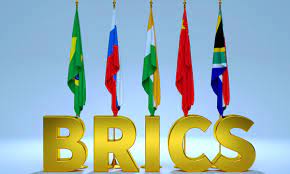
The future of the BRICS+ format
By Yaroslav Lissovolik
The 2023 BRICS summit is over and it is clear that it is one of the most historic and transformational BRICS summits on record. While there has not been much progress on critical issues such as BRICS+ trade liberalization or the creation of a new reserve currency, a major expansion was unleashed by the bloc, with six new members forming part of the BRICS core starting from January 1, 2024: Argentina, Saudi Arabia, Ethiopia, United Arab Emirates (UAE), Egypt and Iran. This widening of the ranks enables BRICS to cover almost all of the main regions of the Global South, most notably the Middle East that is now represented by Iran, Saudi Arabia and UAE. But while the BRICS expansion clearly increases the economic and political weight of the grouping, it also creates longer term challenges that may be non-trivial to resolve.
The challenges associated with the BRICS expansion are all too well-known: if the principle of consensus-based decision-making is to be maintained, securing support for new initiatives will become increasingly difficult. The addition of Argentina certainly serves to strengthen BRICS presence in Latin America and in MERCOSUR, but what will happen with Argentina’s stance on some of the key issues of BRICS future economic development if populist forces take over after the next presidential elections? There is also the risk of shifting geopolitical preferences – something that changes not only with electoral cycles, but also economic exigencies. All in all, expansion is a plus, but it is something that calls for additional mechanisms to be created within BRICS to mitigate the associated risks.
On the other hand, there are also opportunities that new members bring to the BRICS bloc – these are only yet to be explored in view of the re-configuration of the bloc’s membership. One important prospect in my view is the greater scope for plurilateral alliances and accords within a significantly expanded BRICS that may bring together 5 to 7 members, maybe less or more, but not necessarily the full 11-strong consensus. With respect to important initiatives within BRICS, the R5 common currency project may be undertaken by the bulk of the “old core” in conjunction with Saudi Arabia, while other BRICS economies that are not ready can potentially join later within the R5+ format. Such a plurilateral framework in some ways already operates in international organizations and fora such as G20 or the WTO. The wider membership provides also greater variability and scope for innovation in terms of new initiatives coming from core members. It also serves to reduce somewhat the negative effects of the China-India frictions with respect to the key items on BRICS development agenda such as BRICS+ and trade openness.
How will other BRICS-related alliances develop going forward? A lot depends on how the BRICS+ format will evolve as it served as essentially a laboratory for preparing the ground for the expansion that took place this year. Indeed, every country that acceded to BRICS in 2023 previously featured in the BRICS+ activities undertaken by South Africa and China. Thus far there is still not much clarity on what the reigning paradigm is in the bloc – in para 92 of the Declaration the BRICS have tasked the Foreign Ministers “to further develop the BRICS partner country model and a list of prospective partner countries and report by the next Summit”. In essence a circle of friends is emerging in line with what was advocated by Brazil. The BRICS+ format is welcomed in the context of South Africa’s presidency, but there is no framework or plan advanced as to how this format is to be further developed.
One of the possibilities is that Russia during its presidency in 2024 will revisit the concept of the “integration of integrations”, i.e. bringing closer together the regional integration arrangements of the BRICS economies. The most recent statements coming from Moscow point to plans to strengthen the linkages between the SCO, the EAEU and BRICS. Such a BRICS+ framework that creates a platform for regional integration arrangements may be instrumental in expanding BRICS reach to the only remaining region left outside of the core, namely ASEAN/South-East Asia. ASEAN is a crucial region in the world economy as it is one of the main incubators of free-trade alliances, digital economic alliances and some of the highest economic growth rates in the world in the past several decades. In fact, it appears that Indonesia was discussed as a possible member for the 2023 expansion, but in the end it opted to stay on the sidelines. Part of the reason may have been ASEAN-wide considerations – in view of the need for Indonesia to measure its policy impulses by ASEAN-wide considerations of centrality and consensus, its greater cooperation with BRICS could be secured via building “region-to-region” bridges towards ASEAN from other regional integration blocs where BRICS economies are members.
This article originally appeared at https://brics-plus-analytics.org/brics-expansion-new-challenges-and-opportunities/
